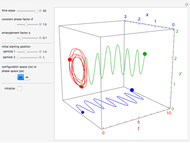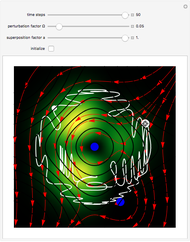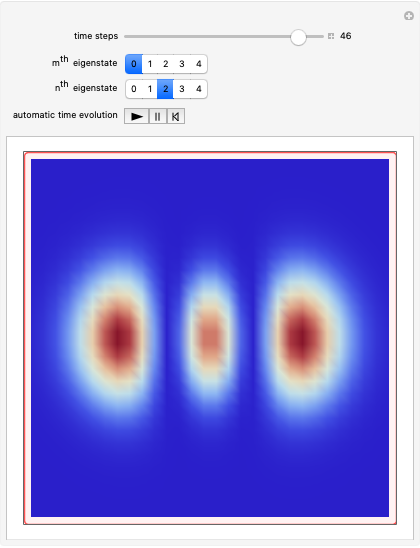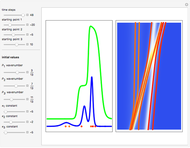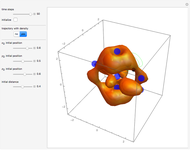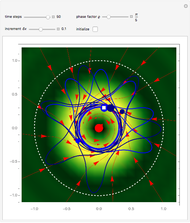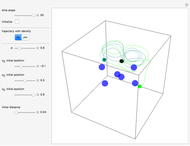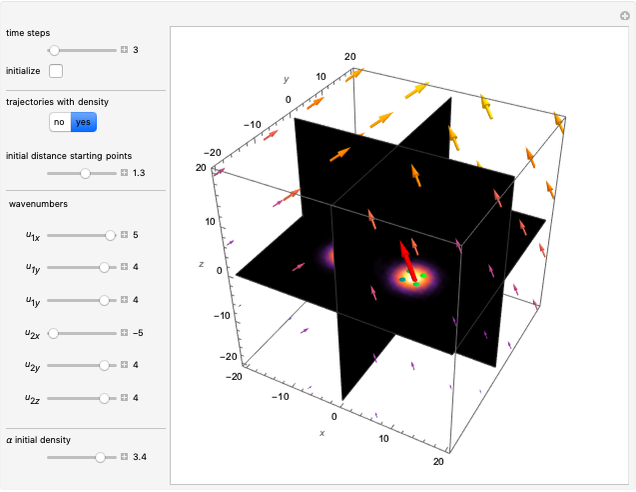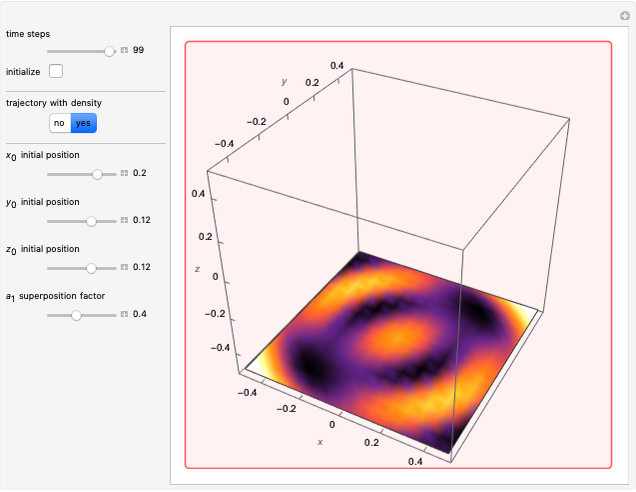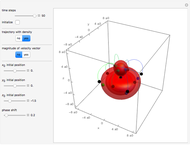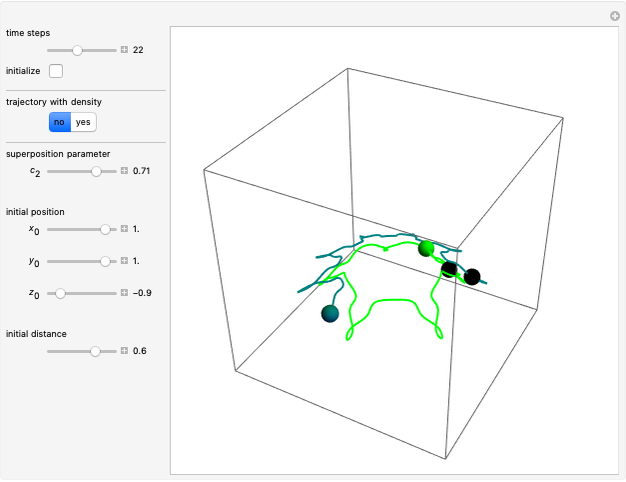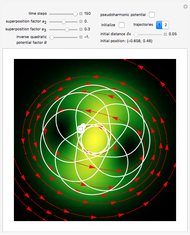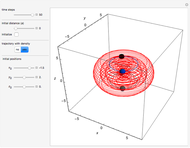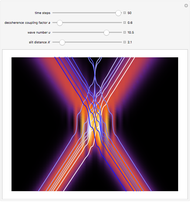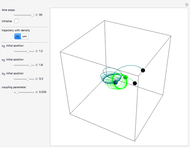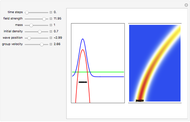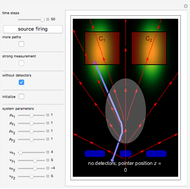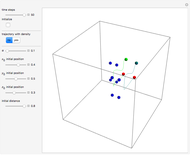Collision of Two Neutrons in the de Broglie–Bohm Approach

Requires a Wolfram Notebook System
Interact on desktop, mobile and cloud with the free Wolfram Player or other Wolfram Language products.
Neutron scattering is a spectroscopic method of measuring the motions of magnetic particles. This can be used to probe a wide variety of different physical phenomena: interference effects, diffusional or hopping motions of atoms, rotational modes of molecules, acoustic modes and molecular vibrations, recoil in quantum fluids and magnetic quantum excitations [1].
[more]
Contributed by: Klaus von Bloh (January 2020)
Open content licensed under CC BY-NC-SA
Details
The Schrödinger equation for the motion of a free particle is given by:
 .
.
It is readily shown that the general normalized solution of the two sub-beams  is of the form
is of the form

with

where  is the considered point of space and
is the considered point of space and  is the midpoint of the
is the midpoint of the  wave. The dispersion relationship holds with
wave. The dispersion relationship holds with  , here
, here  (atomic units). The solution as stated is defined in the infinite space
(atomic units). The solution as stated is defined in the infinite space  . Obviously, the initial condition at
. Obviously, the initial condition at  determines
determines  (inverse Fourier transform). It follows
(inverse Fourier transform). It follows
 .
.
For the  neutron beam, the
neutron beam, the  is chosen by:
is chosen by:

with initial density  ,
,  , and with the wavenumber vector
, and with the wavenumber vector  for the
for the  particle. The total wavefunction becomes
particle. The total wavefunction becomes
 .
.
From the total wavefunction for  , the equation for the phase function
, the equation for the phase function  could be calculated, and therefore the
could be calculated, and therefore the  components of the velocity. This is a standard procedure [5–7] in Bohmian mechanics, which will not be described here.
components of the velocity. This is a standard procedure [5–7] in Bohmian mechanics, which will not be described here.
When PlotPoints, AccuracyGoal, PrecisionGoal and MaxSteps are increased (if enabled), the results will be more accurate. The initial distance between the starting trajectories is determined by the factor  .
.
References
[1] Wikipedia. "Neutron Spectroscopy." (Jan 21, 2020) en.wikipedia.org/wiki/Neutron_spectroscopy.
[2] H. R. Brown, C. Dewdney and G. Horton, "Bohm Particles and Their Detection in the Light of Neutron Interferometry," Foundations of Physics, 25(2), 1995 pp. 329–347. doi:10.1007/BF02055211.
[3] C. Dewdney, "The Quantum Potential Approach to Neutron Interferometry Experiments," Physica B+C, 151(1–2), 1988 pp. 160–170. doi:10.1016/0378-4363(88)90161-1.
[4] D. M. Greenberger, "The Neutron Interferometer as a Device for Illustrating the Strange Behavior of Quantum Systems," Reviews of Modern Physics, 55(4), 1983 pp. 875-905. doi:10.1103/RevModPhys.55.875.
[5] "Bohmian-Mechanics.net." (Jan 21, 2020) www.bohmian-mechanics.net/index.html.
[6] S. Goldstein. "Bohmian Mechanics." The Stanford Encyclopedia of Philosophy. (Jan 14, 2020)plato.stanford.edu/entries/qm-bohm.
[7] P. R. Holland, The Quantum Theory of Motion: An Account of the de Broglie–Bohm Causal Interpretation of Quantum Mechanics, New York: Cambridge University Press, 1993.
Snapshots
Permanent Citation







